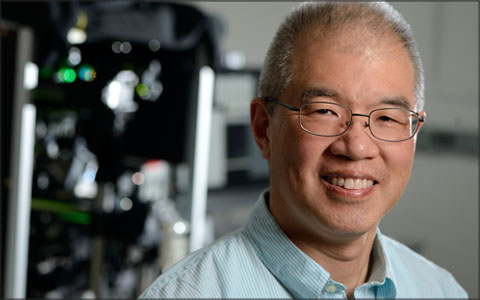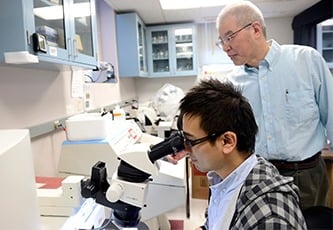A biochemist and cell biologist by training, Biomedical Engineering Associate Professor Scot Kuo made a name for himself developing technologies to better understand the mechanical functions of cells. These include optical tweezers, a tool to measure forces between and within molecules, and laser-based nano-tracking, an instrument that helped demonstrate that the bacterial pathogen Listeria moves in a jerky, steplike fashion when it infects cells.
But when he got the opportunity to direct the Johns Hopkins School of Medicine’s Microscope Facility in 2006, he couldn’t resist. The position calls on a number of his interests — like advising faculty on what tools can best help them achieve desired research results or suggesting good materials and design strategies to biomedical engineers looking to create their own equipment.


